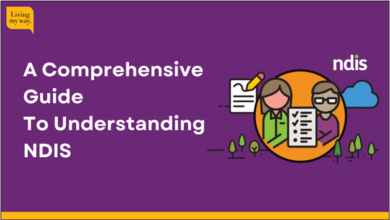Key Tips for Managing Employee Safety in the Workplace

Managing employee safety in the workplace is crucial for maintaining not only the health and well-being of staff but also for ensuring operational efficiency and protecting the organization’s reputation. Effective safety management involves a proactive approach to identifying risks, educating employees, and fostering an environment where safety is a shared responsibility. This article delves into key strategies that can help employers ensure a safer workplace, from leveraging educational resources to engaging employees directly in safety practices.
Regular Safety Audits and Assessments
To effectively manage workplace safety, regular audits and risk assessments are essential. These audits help identify potential hazards before they lead to accidents or injuries. Conducting thorough safety assessments involves examining all aspects of the work environment, from machinery and equipment to work processes, and even employee behaviors. Guidelines for these assessments should include a clear schedule, a checklist of safety items to review, and a protocol for reporting and addressing issues. By systematically identifying and mitigating risks, companies can significantly reduce the likelihood of workplace accidents.
Leveraging Education and Training
Education and training are foundational elements in fostering a safe work environment. Equipping both safety officers and employees with the latest safety practices and regulations is essential. Online safety degree programs can be particularly beneficial, offering flexible, comprehensive learning that covers a broad range of topics from occupational health to emergency preparedness. These programs not only enhance the expertise of those directly responsible for workplace safety but also allow for a broader dissemination of critical safety knowledge across the company. By investing in continuous education, businesses can keep their teams updated on the most effective techniques for maintaining workplace safety.
Developing a Comprehensive Safety Plan
Creating a comprehensive safety plan is a critical step in safeguarding employees. This plan should be tailored to the specific needs and risks of the workplace and include detailed strategies for hazard prevention, risk management, and emergency response. Key components might include safety protocols for each department, guidelines for handling hazardous materials, and procedures for accident reporting. The plan should be regularly updated to reflect new safety research, changes in company operations, or updates to legal regulations. A well-crafted safety plan not only helps prevent workplace incidents but also ensures quick and effective responses when incidents do occur.
Engaging Employees in Safety Practices
Employee engagement is a powerful tool in enhancing workplace safety. When employees are actively involved in safety programs, they are more likely to commit to maintaining safety standards and participating in safety initiatives. Methods to foster this engagement include establishing safety committees, soliciting safety suggestions, and offering incentives for safety goal achievements. Safety committees can serve as a bridge between management and staff, providing a forum for discussing safety issues and developing solutions collaboratively. Encouraging employees to contribute their ideas and feedback helps cultivate a culture of safety that incorporates diverse perspectives and solutions.
Utilizing Technology and Equipment
Modern technology offers new avenues for enhancing safety in the workplace. Wearable devices can monitor employee vitals and send alerts if unsafe conditions are detected, such as excessive heat or exposure to toxic substances. Automation can also play a role in reducing the human risk factor in dangerous operations, thereby decreasing the likelihood of accidents. Additionally, maintaining and regularly updating safety equipment is vital to ensure they function correctly when needed. For example, regular checks on fire extinguishers, safety harnesses, and air quality monitors can be life-saving in emergency situations.
Emergency Preparedness Training
It is critical for all employees to be equipped with the knowledge and skills to handle emergency situations effectively. Emergency preparedness training should be a core component of any organization’s safety strategy. This training includes regular drills, such as fire drills or emergency evacuation procedures, to ensure everyone knows what to do in case of an emergency. Such drills reinforce the practical application of theoretical knowledge and help identify any gaps in emergency plans. Additionally, keeping emergency response plans up-to-date and accessible to all staff members is essential for a swift and organized response when emergencies occur.
Health and Wellness Programs
Integrating health and wellness programs into the corporate safety strategy can have a significant impact on reducing workplace injuries. These programs focus on more than just physical health; they also address mental well-being, which can affect an employee’s alertness and ability to work safely. Programs might include regular health screenings, stress management workshops, and access to fitness facilities. Encouraging a healthy lifestyle helps prevent chronic injuries and illnesses, reducing absenteeism and improving overall productivity while emphasizing the company’s commitment to its employees’ health and safety.
Clear Communication of Safety Policies
Clear and effective communication of safety policies is paramount in ensuring that these policies are understood and followed. Regular training sessions, accessible written materials, and clear signage help reinforce safety rules and procedures. It’s also beneficial to use multiple communication platforms, such as email updates, intranet posts, and physical bulletin boards, to ensure that all employees, regardless of their role or location, receive consistent safety information. This comprehensive communication strategy helps to maintain a safety-aware culture across the organization.
Monitoring and Feedback
To maintain high safety standards, continuous monitoring of safety practices and the environment is necessary. This includes regular inspections and observations to ensure compliance with safety protocols and to identify new hazards. Feedback mechanisms should also be in place to allow employees to report potential risks or safety violations anonymously. Such feedback is invaluable for ongoing improvement of safety measures. Analyzing incident reports and feedback can help refine safety strategies and training programs, leading to a safer workplace.
In conclusion, effective management of employee safety in the workplace is a dynamic and continuous process that requires commitment from every level of the organization. From leveraging technology and ensuring proper emergency training to fostering a culture of health and clear communication, each element plays a crucial role in safeguarding employees. By implementing these strategies, businesses not only comply with necessary safety regulations but also build a workplace where safety is integrated into the very fabric of the organizational culture. This not only protects the workforce but also enhances overall operational effectiveness, positioning the company as a responsible and appealing place to work.



